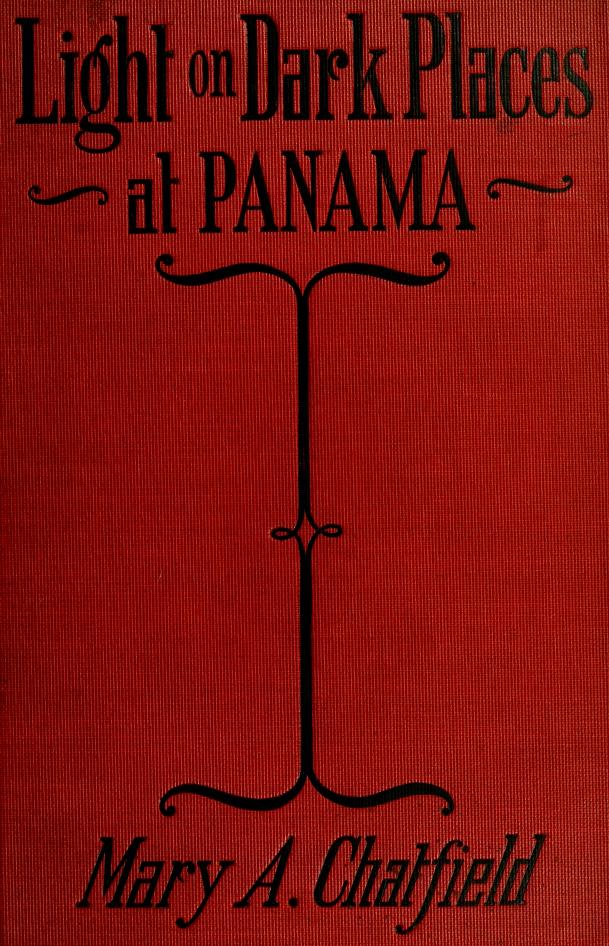
In Light on the Dark Places at Panama written by Mary A. Chatfield, the author, recounts her experience working as a stenographer at Isthmus in Panama in 1905. She was employed by Columbia University for two and a half years in the department of electrical engineering before expanding her career into Latin America. Her perspective offers an outside interpretation to life in Panama, as she is foreign to the customs and atmosphere of the country. Her decision to work in Panama was shocking to a plethora of her peers due to their negative perception of Latin American living conditions and economic opportunities. Chatfield sheds light upon the complicated political climate surrounding the United States and non-U.S. citizens. For example, she acknowledges that under the administration of President Harrison, a law was enacted by Congress prohibiting “any but citizens of the United States from filling positions in the American Merchant Marine” (Chatfield). This action by Congress exemplifies the distorted view of non-U.S. citizens in this time period and their capabilities in positions of power. In Light on the Dark Places at Panama, Chatfield documents her depiction of Panama and how she felt working under Panamanian superiors, providing her own evaluation of their credibility in positions of power.
Throughout the duration of her work at Isthmus, Chatfield recurrently expressed her distaste for the lack of expertise she felt her superiors, many of whom were Panamanian, possessed. She firmly believed that she was above them in terms of skill and experience. She states, “The chief clerk, who, like many other people here in positions of authority, is lacking in training and experience for such a position, while floundering around in bewilderment, was persuaded by this officious young ignoramus to allow him to dictate in all matters. He assumes to possess knowledge on all and any subject, among them engineering (Chatfield).” While it is unclear whether or not the race of her superiors plays a prominent role in her unsatisfactory view of them, it is evident that she feels they are underqualified. However, she did express that when she discovered that she would be working under a Panamanian engineer, she was displeased. In terms of her view of Latin America, she looked down upon Panama’s living conditions and described the country’s smells and lack of cleanliness with disgust. Overall, her point of view as an affluent white woman shaped her depiction of Latin America and her Latin American superiors because she portrayed herself as higher in status and intellect when compared to Panamanians. She believed that she should not be expected to work under Panamanians due to her notion that she should have power over them in the workplace. She believed that as an educated white woman, she should have been granted the right of being their superior.
Chatfield’s mindset that she should have power over Panamanians due to her race correlates to a historical system that affected the lives of Panamanians in the 19th century. Repercussions of the colonial aristocracy in Panama led to the establishment of a small collection of elite families who dominated political control over the country. The deprecative term of rabiblanco or “white tail” was a term employed to describe the Caucasian people in these elite families. The dominance of white people and people from the United States over Latin Americans is exemplified through the Bidlack Mallarino Treaty of 1846, which allowed the U.S. to cross Isthmus and utilize military forces in Panama (McGuinness). This idea that the United States has the power and right to intervene in Latin American countries perpetuates the power dynamic established between the United States and Latin America. It depicts Latin America as a place in need of improvement by outside forces who are deemed more capable. Mary A. Chatfield’s depiction of Latin America in Light on the Dark Places at Panama characterized Panamanians as lacking in development and education, showing that foreign perceptions of Latin America in the 19th century were elitist and viewed Latin Americans as people of lower educational and societal levels.
Bibliography
Chatfield, Mary A. Light on Dark Places at Panama. New York: Broadway Pub. Co, 1908. https://archive.org/details/lightondarkplace00chat/mode/1up?view=theater
McGuinness, Aims. Path of Empire: Panama and the California Gold Rush. Ithaca: Cornell University Press, 2008.
